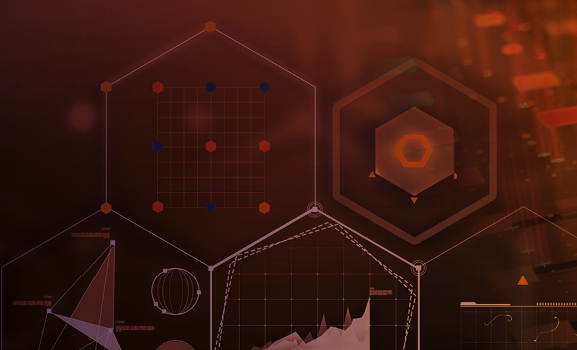- WHAT WE DO
Additional Services

- Industries

Case Study: Multilingual Retail Marketing
New AI Content Creation Solutions for a Sports and Apparel Giant

- RESOURCES

- WHO WE ARE

What We Do Home
Generative AI
- AI Translation Services
- Content Remix
AI Data Services
- Aurora AI Studio™
Machine Translation
- MT Tracker
Instant Interpreter
Customer Onboarding
Translation Service Models
Content Services
- Technical Writing
- Training & eLearning
- Financial Reports
- Digital Marketing
- SEO & Content Optimization
Translation Services
- Video Localization
- Software Localization
- Website Localization
- Translation for Regulated Companies
- Interpretation
- Instant Interpreter
- Live Events
- Language Quality Services
Testing Services
- Functional QA & Testing
- Compatibility Testing
- Interoperability Testing
- Performance Testing
- Accessibility Testing
- UX/CX Testing
Industries Home
Life Sciences Translations
- Pharmaceutical Translations
- Clinical Trial Translations
- Regulatory Translations
- Post-Approval Translations
- Corporate Pharma Translations
- Medical Device Language Services
- Validation and Clinical
- Regulatory Translations
- Post-Authorization Translations
- Corporate Medical Device Translations
- COA Translation Services
Banking & Finance
Retail
Luxury
E-Commerce
Games
Automotive
Consumer Packaged Goods
Technology
Industrial Manufacturing
Legal Services
Travel & Hospitality
Insights
- Blog Posts
- Case Studies
- Whitepapers
- Solution Briefs
- Infographics
- eBooks
- Videos
Webinars
Lionbridge Knowledge Hubs
- Positive Patient Outcomes
- Modern Clinical Trial Solutions
- Patient Engagement
- AI Thought Leadership
SELECT LANGUAGE:
The robots are coming.
Translators, raise your hands: have you heard that phrase ad nauseam in the last few years?
Keep them raised: have you feared (or do you still fear) that robots will come for your job?
With exponential enhancement of AI-based Neural Machine Translation (NMT) in recent years, it’s only natural for translators to wonder about the implications of this developing technology on their jobs.
But consider this: maybe AI isn’t here for your job. What if it’s here to make your job even better?
At Lionbridge, we’re uncovering uses of AI that make our translators’ work more targeted and more interesting to them—and in turn yield better results for our customers.
Read our take on ChatGPT and localization and learn why our Head of Product Language Services anticipates the AI technology will be a game-changer for the industry.
Win-Win-Win Automation
Our machine learning-driven tools create a win-win-win situation: a win for translators, who are matched to projects that better align with their interests and skills; a win for customers, who benefit from the consistency and expertise of the most relevant translators and resources assigned to their given project; and a win for us, because we’re able to reduce inefficiency and augment customer satisfaction. Huge win.
How do we do it?
Tool 1: Domain Detector
The Lionbridge Domain Detector is a machine learning-driven component that automatically identifies the domain or industry to which a new translation project belongs. By detecting the appropriate domain, we can assign the most relevant and specialized translators and linguistic resources to the project.
We built the Domain Detector based on a taxonomy generated over 20+ years in the industry, with 30 first-level domains and 400 million human-tagged words. And that’s just phase one.
The Domain Detector analyzes the content of a new project and first identifies an overarching primary domain to which it belongs; for example, “Automotive and Machinery.” It will identify secondary and tertiary domains as well; for example, “Business and Commerce” and “Electronics,” respectively.
Once we’ve appropriately identified these layers of specificity, we can get hyper-targeted when gathering the necessary resources to complete the project—from translation memories and glossaries to translators and subject matter experts. Our machine learning-based tool allows us to do this more quickly, easily, and accurately than a human alone could.
And that means that we match our translators more readily with projects that excite them. It means we can quickly and easily find the rare translator who is an automotive business expert also fluent in both Hindi and French. Those people exist in our pride—and our tools help us find them and activate them faster and with a higher likelihood of a successful outcome.
Tool 2: Customer Affinity
Similarly, our machine learning-based Customer Affinity tool helps us make data-driven decisions to minimize risk, increase quality, and reduce wasted time and duplicated effort on the part of our translator team.
The Customer Affinity component identifies content from existing customers that is most similar to the content of a new customer, utilizing translators who already have experience with similar content. The tool is fueled by machine learning that leverages content from 400 customers and 400 million words.
This means our team can select translators who are already familiar with a given subject or topic, and who have a proven ability working with that type of content. That allows translators to specialize and hone their skills with content that’s relevant and interesting to them—and it adds confidence for new customers who can rest assured that we’re not reinventing the wheel with each new project.
Tool 3: Automatic Translator Identifier
As mentioned above, the tools we’ve created work to identify the most appropriate linguistic resources and translators for a given job. Our new Automatic Translator Identifier uses large amounts of tagged linguistic data to compare project content with content from each translator that we have stored in our linguistic repository. The tool performs a comparative analysis and generates a list of best-fit translators for a given job.
This allows us to set up our translators for success by connecting them to work that already meets their skills. It means that translators can move faster and take on more work. It means our customers have a faster path to success. And it means each new project undertaken and each new word translated helps our system become even smarter, so we can continue making things easier, more relevant, and more engaging for our community of translators as well as for our customers.
Win. Win. Win.
Are the robots coming? Yes—but that doesn’t have to strike fear in the hearts of translators. At Lionbridge, we plan to keep harnessing the power of AI to make our translators—and our customers—effective, efficient, and happy.
Want to learn more about how we could use AI to expedite and enhance your translation or localization project? Reach out to us today.




